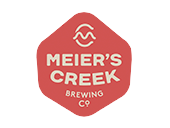It’s a no-brainer that you need technology to run your business. Once you have your production equipment, your next purchases may include computers and internet access, along with basic tools for email, notetaking, spreadsheets, etc. But beyond those essentials, how do you decide what tech to invest in next? There are so many software options for craft businesses, all with a variety of features, benefits, and price points — it can be complicated to even get started. We talked to a handful of tech providers in the craft beverage industry – Arryved, Craftpeak, VineSpring, and Xero – to get their input on how to know when you’re ready, and what to consider before you invest in new technology.
Define the Problem
To know what kind of technology may be beneficial for your business, you need to first figure out your key problems and pain points. John Kelley from Craftpeak says, “Start by defining the problem you are trying to solve. Then identify the desired outcome. Ask yourself, ‘What would I be able to accomplish more of if I invested in this software?’ and ‘What benefits will I gain?’ These can be both tangible and intangible.” Maybe you have big growth goals over the next year to increase production or increase sales. Find out what is standing in your way and what tools may be able to free up time and resources.
Consider bottlenecks within your business — tasks or processes where you or your staff are spending the most time. Chris Towt from VineSpring provides one example: “Are you spending hours of time moving data from your sales platform to your accounting software? If so, investing in software that synchronizes the two could save many hours each month and make the investment an easy decision.”
You may already know where inefficiencies exist in your operations, but it is also smart to get input from other employees to uncover common issues that may benefit from a tech solution. Questions to ask include:
- Where are you spending the most time? Is there a more efficient way to accomplish the same tasks?
- What is your biggest frustration in your role?
- Would it be helpful to bring on a new employee to take on a specific set of tasks? Or would a tech solution solve the same problem in a more cost-effective way?
Consider the ROI
In a perfect world, businesses would have the resources to solve every problem with technology. Unfortunately, that’s not the reality for many craft businesses — but if you choose solutions strategically, even a costly piece of software can be one of your best investments. To make sure the technology is working for you, you should be able to see measurable results, such as time-savings, increased sales, or improved efficiency.
Once you’ve taken the time to figure out the problem you need to solve, you need to a set a specific, measurable goal. This is a vital conversation you should have with any potential tech vendor so you can ensure that your needs will be met and that you will see a positive return on your investment. Most vendors will be able to share success stories, case studies, and best practices from other customers to provide a realistic expectation for results.
Nancy Trigg from Arryved has great advice on this front: “It’s always good to invest in software when the product can pay for itself. For example, if you can save an hour per day that you are paying an employee $15/hour, but the software only costs $150/month, that’s a positive of $300 a month you will see on your bottom line right away. Or if the software will help you sell more product that equals 3 times the cost of the product, again, it’s a good investment with a positive impact on your bottom line.”
Plan Proactively
We asked Brooks Arbogast from Xero when a craft business should think about investing in software and his answer was simple: “Software is essential to a business’s operations and reporting, so the sooner the better. Why not make that investment proactively and stay on top of both your business and your life?” In other words, sometimes you just need to take the leap, instead of waiting until you’re already under water. If you want to grow your business, you can’t do it by relying on manual methods. So, there are benefits to proactively anticipating challenges and taking the time to set up processes and systems from the beginning. As Ekos CEO Josh McKinney says, “If you’re not using technology for your craft business, you’re already behind.”
Think about where you want your craft business to be in the future and talk to your peers – or mentors you look up to – and find out what they’ve done to be successful. What systems did they put in place that helped them grow? Or what do they wish they had done differently? Take advantage of the community, collaboration, and camaraderie within the craft beverage industry to learn from the experience of others.
At Ekos, we work with thousands of craft producers and while everyone has different strengths, styles, and perspectives, one thing is clear: businesses who adopt tech are the ones who grow, succeed, and stand the test of time.
If you want to learn more about the tech solutions that craft makers rely on, download Building a Tech Stack: An Analysis of Breweries and Cideries, to get insights from 1,500 craft producers.





